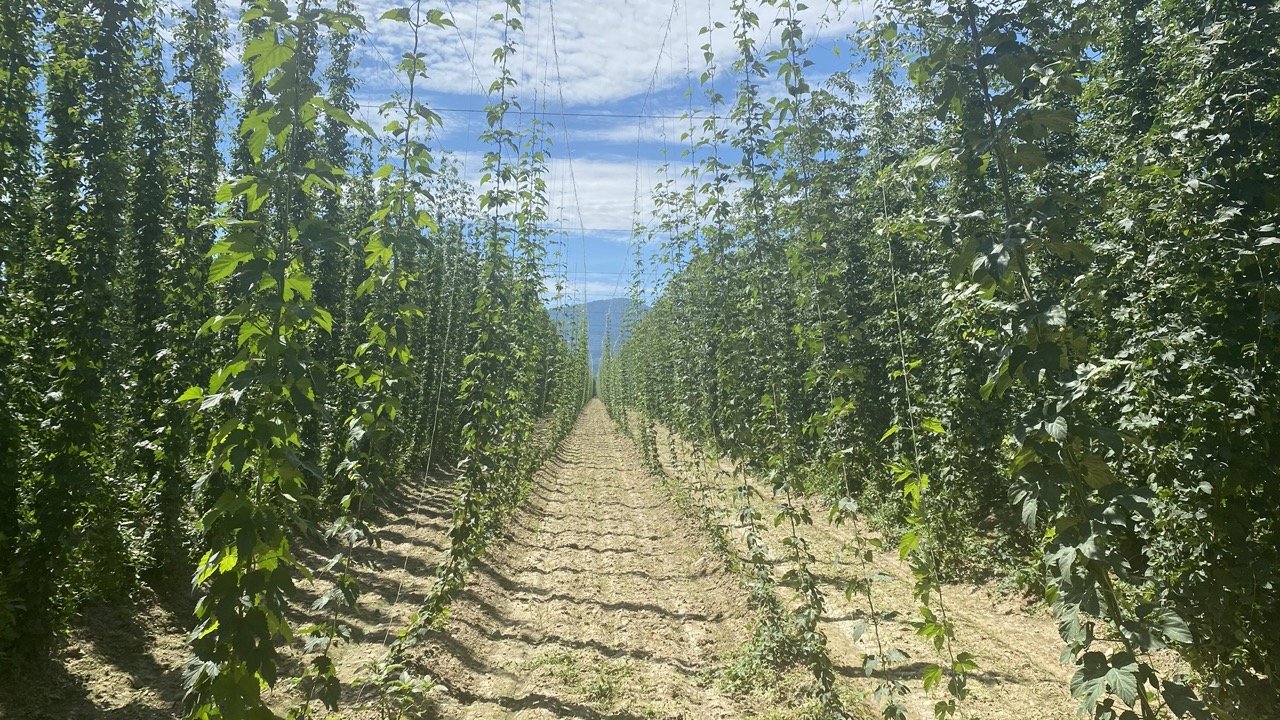5 Hoppy trends
This article was first published in Bird Brewery Magazine, this is the translated version.
From hop field to beer glass: the hop trends in a row.
Without hops, no beer. The green gold gives our beer that fine, fresh-bitter finish. Besides that, hops provides a gigantic diversity of aromas. From spicy and floral to many types of fruit, think citrus fruits or tropical fruits. An essential ingredient, in which developments never stand still. Hollands Hophuis brings you the latest trends in hops.
1: Focus on aromas
Hops naturally follow trends in beer land. In recent years, we have seen many highly aromatic IPAs appear: the New England or Hazy IPAs that taste mainly fruity, sometimes so much that it goes in the direction of pure fruit juice. These beers get a lot of these flavours from the hops, and with this we have caught the first trend in hop country: the latest hop varieties focus on fruity aromas. Think of Wolf (Slovenia), Zula (Poland) and Callista (Germany), examples of very fruity hops from European soil.
2: Sustainability
More and more beer drinkers consider sustainability important and hops are following this trend. We see more and more hop growers taking the step to organically grown hops. That is not an easy task: before a hop variety is certified as organic, it takes you three years as a hop grower, as long as your field does not suffer from extreme weather conditions. That is another reason to make hop growing sustainable. Tango from Germany is a good example; these hops need less crop protection products and are more water-efficient. The latter makes it more resistant to extreme weather. In addition, Tango also has a very fruity aroma profile, which is entirely suited to this day and age.
In line with this trend, we see the demand for organic hops growing, especially among brewers who are not certified organic. After all, organic hops fit into any beer, regardless of certification status.
3: Classics
A trend that is opposite to the fruit juice trend is the desire for beer that tastes like beer. This translates into the rise of craft lagers, traditionally brewed, bottom-fermenting beers. Beers in which balance and flavour nuances are much more important than thick, pronounced flavours. That translates into the demand for hops that can bring these nuances. Slovenian hops Celeia and Bobek are good examples, alongside classics like Czech Saaz or German Tettnanger. Hops that give spicy and floral aromas with a subtle fruity touch. These are hops that have been grown on European soil for generations, not without reason Europe is the cradle of hop growing.
4: New...
We have noticed for years that there is always great interest in newly developed hops. Again, it follows the general beer trend that everything has to be new. A trend that allows you an endless voyage of discovery through the beer landscape, on the hop field, however, it creates great challenges. Because a profitable hop harvest will only be available to our grower after three years, counting from the time the new variety goes into the ground. The plant is mature by then, whether brewers still need the new variety is then a question. So exchanging a field of multiyear plants for a new variety must be a well-considered decision; hitching a ride on fast-changing beer trends is impossible for a hop grower anyway.
First-year plants at our hop farm in Slovenia.
5: ...or Heritage?
At the other end of the spectrum, we find virtually vanished hop varieties that have been revived. These Heritage hops have been gone for so long that they are like new, at the same time they really are authentic hops with their own history. Their relatively small-scale cultivation makes them quite unique too, not surprisingly we see a growing interest in these varieties. Examples of Heritage hops are Rottenburger Spät (Germany) and Groene Bel (Belgium), both of which have a rather modest, spicy aroma. Bullion (UK), on the other hand, is a Heritage hop with quite a powerful aroma of citrus fruit and peach with a spicy touch.





